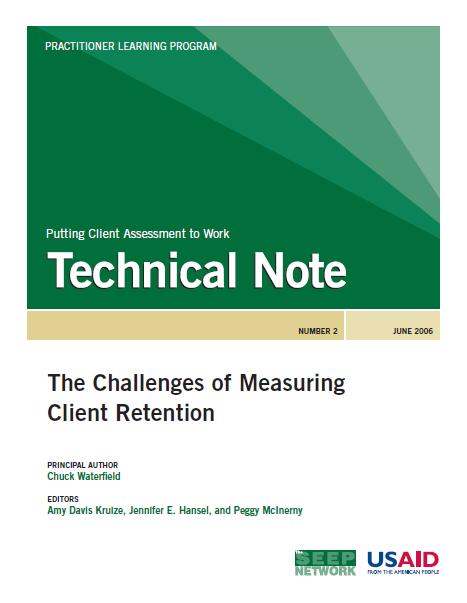2006 | Chuck Waterfield

A primary responsibility of management is to monitor the performance of an institution to determine whether it is reaching its goals. To do so, managers generate ratios to monitor important aspects of performance. In microfinance, a very well-developed set of financial ratios exists to monitor profitability, efficiency, growth, and portfolio quality, among other areas. Yet one area of prime importance generally goes unmeasured: client satisfaction. Managers are clearly very interested in knowing whether their clients are satisfied, but because measures of client satisfaction cannot be directly derived from financial statements, this area is much more difficult to monitor. A popular surrogate for client satisfaction is client retention, yet even this indicator proves difficult to measure. This paper evaluates the history of the microfinance industry’s efforts to measure client retention and proposes several options for improving how this key aspect of a successful business is measured.

1621 North Kent Street, Ste 900,
Arlington, VA, 22209
P 202.534.1400
F 703.276.1433
Website Photos: © mari matsuri
